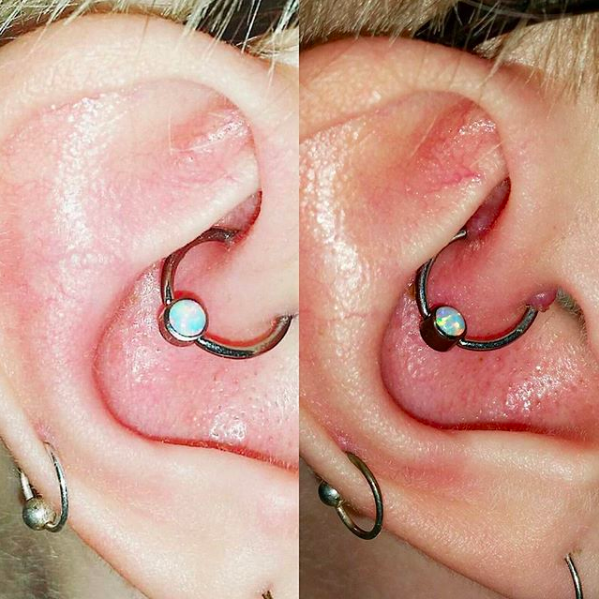Theyre common after ear piercings and can form on both the lobe and cartilage of your ear. Keloids are a type of fibrous scar tissue that can form around body piercings.

Local Infection Without Granuloma After Helix Piercing

What Are These Bumps Around My New Cartilage Piercing A
Dosimetric Results Of Postoperative Tomodirect Radiotherapy
A keloid is scar tissue that grows and rises in or around a cartilage piercing.

Keloid scar after cartilage piercing.
What other piercing questions do you have.
Keloids are overgrowths of scar tissue caused by trauma to your skin.
During the healing period of a piercing and after the piercing is healed you may encounter a keloid on and around your new piercing.
They may also come as a result of vaccinations trauma or even surgery.
Keloids are scar tissue that result from a hereditary condition causing the skin to raise and turn pink or red residing inside or around the hole of your piercing according to the american osteopathic college of dermatology.
The shape of every keloid is also distinct.
It is characterized by a raised overgrowth that looks more like a scar.
Once keloids form they usually.
Everyone is susceptible to keloids but people with less melanin in their skin may be less susceptible.
Moreover the development of keloids varies in every case.
However hypertrophic scarring is a temporary condition and is treated by changing the jewelry and subjecting the ear piercing to sea salt soaks remedy.
This is a scar on these two body parts come as a result of piercing.
Keloids are commonly confused with hypertrophic scarring in ear cartilage piercings.
Piercing keloids bumps hypertrophic scars.
Most of the keloids scars are light pink in color whereas other appears quite darker than your skin color.
The scars can form anywhere on your body but theyre most common with nose and ear cartilage piercings.
Keloids are quite common after ear piercing.
After an initial growth period hypertrophic scars can flatten and shrink over time.
Hypertrophic scarring is a temporary condition and is treated by changing the jewelry and subjecting the ear piercing to sea salt.
Why do keloids occur after piercing.
These growths are commonly confused with hypertrophic scarring in ear cartilage piercings.
Piercings are one of the most common causes of ear cartilage keloids.
This overgrowth of scar tissues can occur on both the cartilage and lobe of your ear.
Back with another piercing faq video and today i teach you how to remove keloids on your piercing.
A keloid is described as the scar tissue that grows and rises in or around a cartilage piercing.
They are a result of excessive collagen that forms during connective tissue repair.
It would be rather surprising that a minor piercing could lead to excessive scar tissue growth resulting in keloid formation but it is entirely possible.
Keloids can range in color from.
You may have been a victim of keloid on nose or keloid earlobe.

The Truth About Conch Piercings

How To Remove A Piercing Bump Piercing Bump Piercings
No comments:
Post a Comment